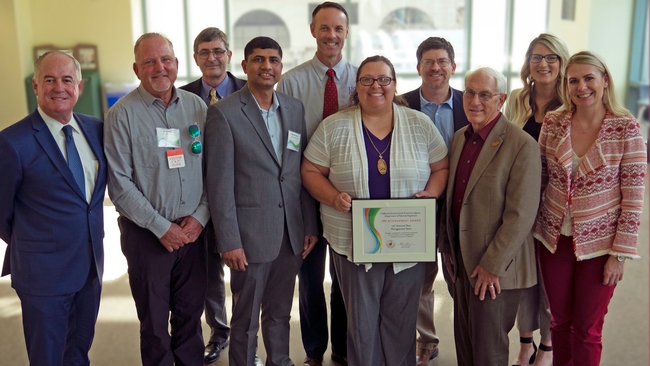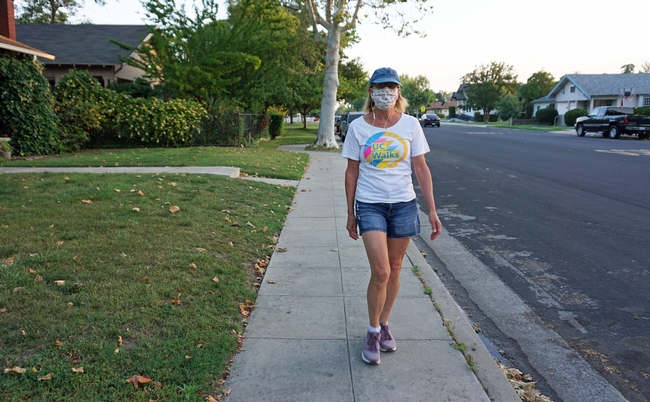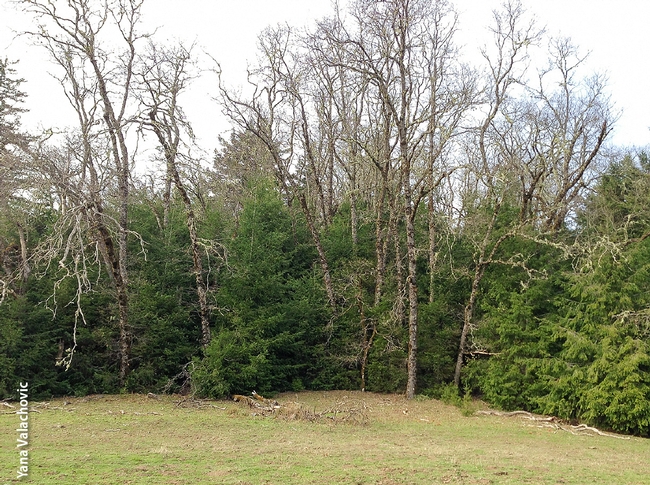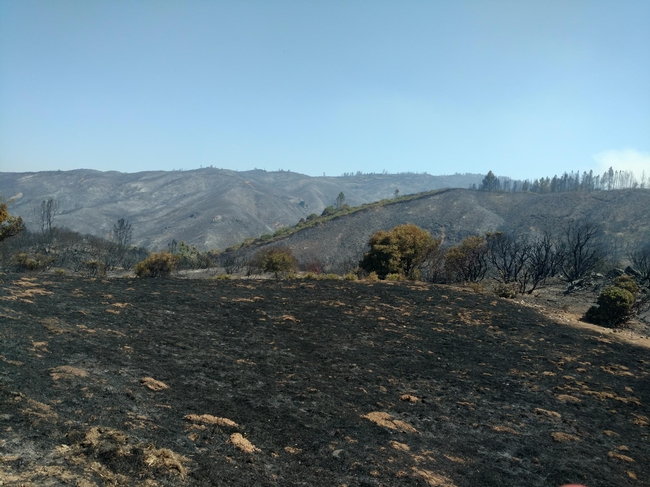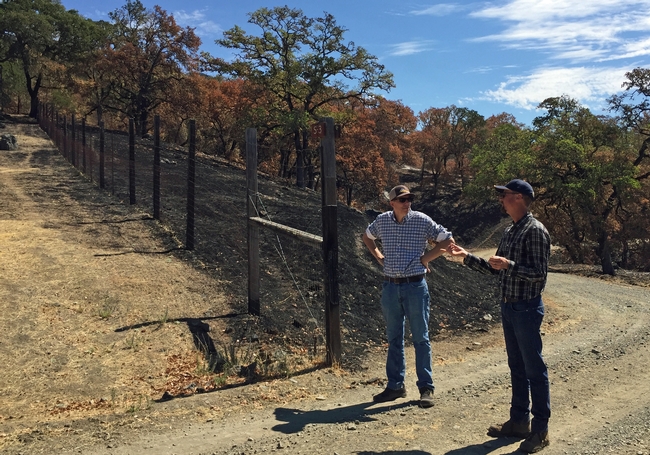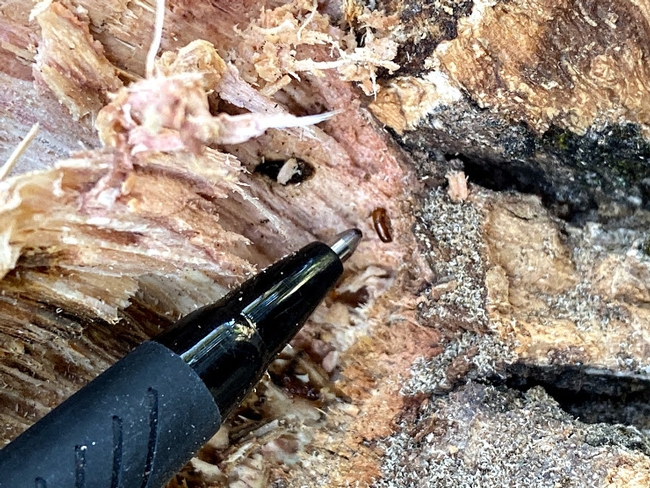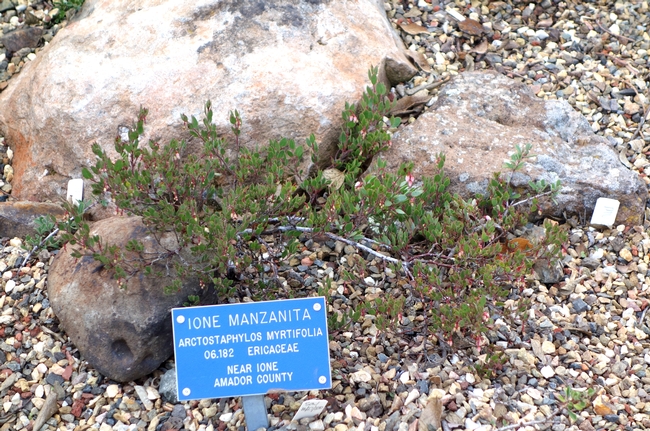Posts Tagged: Vanity%20Campbell
Names in the News
Soule named assistant vice provost for CE
Katherine Soule will serve as ANR's new Assistant Vice Provost for Cooperative Extension. She will start her new duties on July 1, 2020, and continue to serve as UCCE director for San Luis Obispo and Santa Barbara counties and as UCCE youth, families and communities advisor. The role was previously held by Lynn Schmitt-McQuitty until she assumed the role of Statewide 4-H Youth Development Program director.
“We are excited to have Katherine on the Cooperative Extension administrative team! She brings a breadth of Cooperative Extension experiences and leadership skills,” said Mark Lagrimini, vice provost for research and extension. “Katherine is known for her innovative, collaborative, and strengths-based leadership. She cares deeply about improving lives and working environments for her unit, her community and ANR.”
Soule earned her Ph.D. from the University of Georgia, Athens in 2013 and became the UCCE youth, families and communities advisor for San Luis Obispo and Santa Barbara counties. In 2017, she accepted an additional appointment as UCCE director for these counties. She was elected as UC ANR's Academic Assembly Council president for a two-year term ending in June 2020.
"As the assistant vice provost of Cooperative Extension, I look forward to supporting the development and successes of new and existing county directors,” Soule said. “I hope to promote collaborative, cross-county communication, while focusing on identifying and meeting the needs of county directors across the division. We are all most effective when we learn from and support one another, so I look forward to connecting with academics, county directors, ANR leadership and other UC ANR personnel in this new role."
Choe, Dara and IPM team honored by Pacific Branch of ESA
UC ANR scientists Dong-Hwan Choe, Surendra Dara, David Haviland and Jhalendra Rijal received awards for their exemplary work from the Pacific Branch of the Entomological Society of America. The PBESA presented its annual awards on April 20, at a virtual ceremony due to the coronavirus pandemic.
Choe, UCCE specialist in the UC Riverside Department of Entomology, won the Medical, Urban, and Veterinary Entomology Award.
“Since joining the faculty at UC Riverside in 2011, [Choe] has developed an outstanding research and extension program dealing with the major urban structural pests and related issues in the western United States,” wrote Mike Rust, UC Riverside entomology professor, in his nomination letter.
His research includes exploiting the role of semiochemicals and behavior to control social insects and developing novel ant baits.
“Dr. Choe has been at the forefront of developing hydrogels as carriers of baits to control ants and yellowjackets. Developing cost-effective and environmentally safe delivery strategies has always been a major problem facing the use of ant baits in agriculture and urban setting. His pioneering biodegradable alginate beads promise to be a major advancement,” Rust wrote.
Choe also participates in workshops for agricultural pest control advisers, UC Master Gardeners and urban pest control operators.
Dara, UC Cooperative Extension entomology and biologicals advisor for San Luis Obispo and Ventura counties, won the Award for Excellence in Integrated Pest Management.
This annual award recognizes individuals who made outstanding contributions in research and outreach in the area of IPM. Dara's new IPM model has been well-received and its impact has been documented in a UC Delivers story. Dara is the first UC ANR scientist to receive this award and fourth from UC since the Pacific Branch began offering awards in this category in 2009.
The UC IPM Almond Pest Management Alliance Team won the Entomology Team Work Award. The team consists of UC IPM advisors David Haviland and Jhalendra Rijal, former UCCE advisor Emily Symmes, UCCE Kern County staff research associate Stephanie Rill, industry researcher Bradly Higbee of Trécé, USDA scientist Charles Burkes and Bob Curtis of the Almond Board of California.
The team encouraged the adoption of mating disruption for managing navel orangeworm, a major pest in almond orchards, especially in the San Joaquin Valley. After they began demonstrating that mating disruption proved to be an economical pest control method in orchards, they saw a rapid rise in growers adopting the technology. Based on a survey of pest control advisers and growers conducted in the early 2019, the anticipated use of navel orangeworm mating disruption for the 2019 season in San Joaquin Valley was 32%, as opposed to the 7% adoption in 2017. Kern County data showed a 26% countywide increase in the adoption of mating disruption from 2017-2018.
For more than a decade, the team conducted research on navel orangeworm, spider mites, leaffooted bug and ants that laid the groundwork for IPM adoption. For the past three years, the team put these IPM practices on display using nine demonstration orchards across the San Joaquin Valley as part of CDPR Pest Management Alliance and Almond Board of California grants.
The UC IPM Almond Pest Management Alliance Team received an award in February from the California Department of Pesticide Regulation and California Environmental Protection Agency
Three UC Davis faculty members were also selected for prestigious awards: Lynn Kimsey, Walter Leal and Robert Kimsey.
The Pacific Branch covers provinces/states in Canada, U.S. and Mexico on the Pacific Coast.
Farm and Ranch Stress Assistance Network applications due June 23
USDA NIFA requests applications to the 2020 Farm and Ranch Stress Assistance Network funding opportunity.
The purpose of the Farm and Ranch Stress Assistance Network (FRSAN) Program is to establish a network that connects individuals who are engaged in farming, ranching and other agriculture-related occupations to stress assistance programs. The establishment of a network that assists farmers and ranchers in time of stress can offer a conduit to improving behavioral health awareness, literacy and outcomes for agricultural producers, workers and their families.
The FRSAN program will accept applications for Regional Networks. In FY20, NIFA is seeking applications from regional partnerships and collaborations that are led by or include nongovernmental organizations (NGO), state departments of agriculture (SDA), Cooperative Extension Services (CES), and Indian tribes with expertise in providing professional agricultural behavioral health awareness, counseling as appropriate, education, training and referral for other forms of assistance as necessary. NIFA is soliciting applications that align with, build upon, and/or complement the projects funded in FY19. In 2019, the FRSAN program launched with four awards corresponding to U.S. regions in the Northeast, North Central, South and West. In 2020, funding has increased fivefold to support regional frameworks offering stress assistance programs, training, services, and referral.
The long-term goal of the FRSAN projects is to establish a Farm and Ranch Stress Assistance Network that provides stress assistance programs to individuals who are engaged in farming, ranching, and other agriculture-related occupations on a regional basis. Network members must initiate, expand or sustain programs that provide professional agricultural behavioral health counseling and referral for other forms of assistance as necessary through the following:
- Farm telephone helplines and websites
- Training, including training programs and workshops, for the following:
- Advocates for individuals who are engaged in farming, ranching, and other occupations relating to agriculture
- Other individuals and entities that may assist individuals who-
- are engaged in farming, ranching, and other occupations relating to agriculture
- are in crisis
- Support groups
- Outreach services and activities, including the dissemination of information and materials
Applicant organizations must have demonstrable prior experience working in the agricultural stress assistance space. For purposes of implementing FRSAN, a network is an organizational arrangement among three or more separately operated domestic public or private entities, including the applicant organization, with established working histories in the targeted region. Regional lead entities must have the capacity to make state-level sub-awards, to include monitoring the performance of specific projects and active participation within the larger regional network. Providing training and/or offering direct services in every state/territory in the targeted region is not required in FY 2020. However, the applicant must clearly articulate where and why training and services are being offered, as well as any rationale for areas not served and how all states (and territories, as appropriate), will be added to the network in FYs 2021 and 2022, if the project intends to seek continuation funding in those years. If possible, a national, regionwide or subregional helpline and/or website that is available to all states should be implemented and publicized beginning in FY 2021.
Funds may be used to map resources in each region, provide a framework for how those resources can be/are connected, and train state-level people working with agricultural producers (train-the-trainer model) about how to identify farmers under stress, about the existence of a given regional network, availability of specific resources and how to access them, as well as how to make referrals to programs that are equipped to provide direct behavioral care assistance. Such maps must link with USDA programs such as Agriculture Mediation Program and Crop Insurance Mediation and state and county-level USDA field offices with which producers may engage if and when appropriate.
It is NIFA's intention to fund four grants to four separate FRSAN regional leads as a result of this FY 2020 competition: one each in the Northeast Region, North Central Region, Southern Region, and the Western Region. The maximum award for a standard grant is $7,187,000 for a three-year project.
For more information about the FRSAN program and to apply, please visit: https://nifa.usda.gov/funding-opportunity/farm-and-ranch-stress-assistance-network?utm_content=&utm_medium=email&utm_name=&utm_source=govdelivery&utm_term=
To request a copy of the 2019 FRSAN webinar slide deck, please email webchanges@usda.gov.
Applications are due Tuesday, June 23, 2020.
SI Brief: Want video in your toolkit?
Now more than ever, the video format can help us expand our educational outreach.
Want to produce Oscar-winning videos?
Well, we can't quite promise that, but we can help you develop your own videos and video skills - producing something you can be proud of and something that can help the people of California.
So where are we in the series?
Part 3 is a self-learning step about Editing Video and Audio. Access and complete the editing tutorial here. This step builds on how you have planned your project with a storyboard or script (Part 1) and captured the video and audio (Part 2). Now, your next step is editing the project. This clinic gives you hands-on experience in both video and audio editing.
But what if I missed Parts 1 and 2?
No problem! The recording of the Part 2 webinar “How-to of How to videos” is available here.
And don't forget Part 1 – a self-learning opportunity where you prepare a rough draft video production storyboard.
- Start by reading this factsheet about creating a storyboard and script for a video production by Petr Kosina from UC IPM
- Then capture and organize your ideas for a video project you have in mind
Training resources for continued learning and to support your video projects
- Visit our website: ucanr.edu/sites/howtovideo
For more on the SIs and their activities, contact
Jim Farrar: Pests EIPD
David Lile: Natural Ecosystems SNE
David Lewis: Water
Deanne Meyer: Food Systems SFS
Lynn Schmitt McQuitty: Families and Communities HFC
Mark Bell: Vice Provost SIs & SWPs
UC Walks together apart on May 6
Shelter in place got you stuck in the house? Not on May 6, 2020! Walking together, even when we're apart - that's the mission for Virtual UC Walks happening on May 6, 2020! Anytime on May 6, put on your walking shoes and take a walk around your block.
Share your experience with the ANR community. Submit your best nature, urban or fashion photo from your walk to the photo contest and win some cool prizes! Keep a look out for further details from your Staff Ambassador on how to participate in Virtual UC Walks 2020.
Contact your Staff Assembly Ambassador to get involved.
FitBit raffle give away!
Enter our raffle by doing the following:
- Complete this survey
- Promote your walk on social media (Facebook, Instagram or Twitter) using the hashtags #UCANRmoves and #ucwalks
Photo contest
The best nature, best fashion, and best urban point-of-interest photos will win a signed UC WALKS t-shirt, water bottle and fanny pack. Take photos along your walk and submit your best ONE photo here.
Please remember to stick to California's shelter in place guidelines while outdoors:
- Be sure to wear a mask during your walk
- Stay 6 feet apart from others while outside in your community
- Cover coughs and sneezes with your elbow
- Be sure to wash your hands for at least 20 seconds upon returning home
Make your walk an adventure, play Walking BINGO. Download the card at https://ucanr.edu/sites/Staff_Assembly/files/324342.pdf.
For more information, contact your Staff Assembly Ambassador or visit http://staffassembly.ucanr.edu/Subcommittees/Wellness_Committee/Wellness_Committee/UC_Walks/
Hundreds sign up for online oak woodland workshop
California oak woodlands are highly prized ecoregions where stately trees, many of them hundreds of years old, are cornerstones of a habitat for wildlife and native plants. Sadly, some of these ecosystems are seriously threatened by exotic pests and diseases, encroachment by less desirable vegetation, and wildfire.
Each year, UC Cooperative Extension hosts workshops to share scientific developments aimed at conserving these important habitats – and the economic value of ranching – on oak woodlands, which are found on the lower elevation slopes of the Sierra Nevada, the Coast Range and other foothill areas of California.
Typically, the workshops are held in person and draw moderate-sized audiences for presentations, questions and answers, and field trips. Because of the COVID-19 pandemic, this year's workshop was offered online in April with pre-recorded presentations available for viewing at the participants' convenience and a live question-and-answer session on Zoom.
The retooled event garnered 500 registrants, over 300 views of the YouTube videos and 140 participants in the live Q&A session. The presentations and Q&A session are still available online for future viewing as well.
“People from all walks of life participated, including those with professional and personal interest in oak woodlands,” said Yana Valachovic, UCCE forest advisor in Humboldt and Del Norte counties and a conference organizer.
Presentations at the 2020 conference included the following topics:
Encroachment by Douglas-fir
In Northern California, the biodiversity of oak woodlands is being threatened by Douglas-fir encroachment. The oaks' shade helps the young conifers get established with protection from harsh sun. In time, the fast-growing Douglas-fir trees pierce the oak canopies and begin to crowd out the areas' native understories, which are important for the diversity of birds, mammals and reptiles attracted to oaks.
As the Douglas-fir continue to grow and multiply, they threaten the very lives of the oak trees and the unique ecosystem they dominate.
To better understand the Douglas-fir encroachment, Valachovic established 10 research sites in Humboldt and Mendocino counties to gather information about the fate and the age of oaks. She and her research partners determined the ages of the oaks and firs, and counted the seedlings, saplings, snags and understory vegetation.
“With this research, we were able to demonstrate that even though the oak trees can be smaller in diameter they are much older than the Douglas-fir trees,” Valachovic said. “The encroachment process is happening quickly, and the oaks are falling out of the system.”
The shift appears to have been initiated in the mid-19th and early-20th centuries, coinciding with the Gold Rush and wildfire suppression.
With the data confirming Douglas-fir encroachment, Valachovic turned her attention to oak woodland restoration. At 14 sites in Humboldt and Trinity counties, her team studied the effects of Douglas-fir removal.
“Grasses and forbs under the oaks reestablished. Diameter growth on the oaks increased,” she said.
These research findings contributed directly to changes in policy that had previously limited land owners' ability to remove and sell conifers encroaching on oak woodland. The research also helped create new funding opportunities to support oak woodland restoration and conservation in Northern California.
Case study of oak woodland wildfire recovery
In July 2018, about two-thirds of the 5,289-acre UC Hopland Research and Extension Center was burned by the River Fire.
The transformation of the land, which had likely been without a large wildland fire for at least 100 years, was intense and stressful, said UC Cooperative Extension forest advisor Michael Jones. However, it also provided a unique opportunity for researchers to compare the impact of wildfire on the resiliency of vegetation on grazed and ungrazed oak woodland.
Jones established 35 one-fifth acre research plots at the research center and collected data two months following the fire and one year later. The research will continue in the future to better understand long-term impacts, but Jones was able to share revealing early results at the workshop.
Right after the fire, in severely burned areas areas, the future of the oaks looked ominous. Jones predicted 40% tree mortality.
“The oaks were exposed to persistent, intense heat. They were cooked,” he said. “But two months after the fire, we were already seeing basal sprouts. This was an amazing response by the trees. Oaks are pretty damn tough.”
A year after the fire, surveys showed that tree mortality in the burned areas was 25%, much less than Jones' early predictions. While some management for specific situations in severely burned areas may be necessary – such as removal of hazard trees, reducing fuels in defensible spaces or removal to control invasive species – the results of this work show the trees recover naturally.
“Esthetically, I know these systems aren't as pleasing as they were before, but ecologically, they are healthy and recovering,” he said. “In 100 years, it will look just as good as before the fire.”
Fire impacts in woodland areas previously grazed and not grazed
The fire on the research station also permitted Jones to compare the fire's differing impact on non-grazed and grazed oak woodland. At first, the grazed areas looked almost unscathed with minimal flame scorching on the bark, while an area where the pasture hadn't been grazed for 25 years had evidence of much higher severity fire.
“Grazing is a phenomenal way to help manage fuels,” Jones said. However, the grazed areas displayed ecological shortcomings a year later.
“In grazed pastures, the large mature trees were still alive, but there was no oak regeneration (basal sprouting or seedlings),” Jones said. “In the ungrazed area, a lot of biomass had been killed, but there's nearly 100% resprout of oak trees and we have an impressive amount of oak seedling recruitment.”
Jones said he isn't discouraging grazing.
“But it is important to protect sites from grazing, and especially wildlife browse, when a landowner or land managers' objectives are to regenerate or conserve oak woodlands,” Jones said.
New ambrosia beetle another threat to California oaks
Akif Eskalen, UC Cooperative Extension specialist in the Department of Plant Pathology at UC Davis, has identified a new insect-fungus team that causes oak borer wilt in Northern California Valley and Blue Oaks. It is an ambrosia beetle, commonly known as Mediterranean Oak Borer, which carries several fungi in its mouth. The beetle bores into the tree and introduces fungi to grow for food. The fungi spreads and disturbs the transportation of water and nutrients, causing wilt in the tree.
The oozing and staining lesions on the bark are similar to other oak fungal diseases, such as Sudden Oak Death. The beetle – native of Mediterranean basin countries in Africa, Asia and Europe – cannot fly far, so most likely is transported for long distances on infested firewood.
During the workshop, Eskalen suggested not moving firewood, removing heavily infested trees and chipping infested wood into 1-inch particles to reduce the spread of the ambrosia beetle and its fungal partner. He asked viewers to report any suspected oak tree infestations to the local agricultural commissioner, CDFA Diagnostic Laboratories, UC Cooperative Extension advisors or CALFIRE. Chemical options for sparing oaks from the ambrosia beetles' devastation are under investigation.
Threats to oaks and other native plants from root rotting Phytophthora
Restoration plantings have inadvertently introduced plant pathogens to native oak woodland ecosystems in California, said Ted Swiecki of Phytosphere Research, an organization that provides consulting services related to natural resource management, horticulture, urban forestry, and agriculture. The group of pathogens causing the damage are largely from the Phytophthora genus, first described in the 1860s. The name translates from Greek to “plant destroyer.”
Swiecki has observed when Phytophthora infested plants and soils are introduced to native habitats, the pathogens can attack various native plants, including toyon, madrone, manzanita and full-grown oaks. Once established, the pathogen can spread along drainages, by moving soil from one area to another and by hitchhiking on equipment, tires and hiking boots.
The pathogen can easily be overlooked at nurseries, which, by their nature, have conditions that favor Phytophthora development. Plants at nurseries are well watered, have high root density and are often placed on the ground where they can pick up pathogens.
He said the best approach to tackling Phytophthora is not using nursery stock for restoration or beautification of natural oak woodland. Direct seeding, using natural regeneration, or onsite propagation are safer ways to enhance vegetation in oak woodland.
“It's easier to prevent Phytophthora from being introduced in the first place and much cheaper and more effective than trying to eradicate it later,” Siewcki said.




